By Audrey Hayes.

Craig and Kylee Mora run four farms at Ōtorohanga, milking 1700 cows on a total of 488ha. They employ contract milkers and have a large farm team across the group.
Two Ōtorohanga farmers believe no farm is ever complete, and improvements can always be made. Taking to new technology and enlisting the help of industry experts has turned their four farms into an astonishing success story.
But Craig and Kylee Mora say none of it would be possible without the supportive team they’ve built along the last 10 years since they first went into partnership with Craig’s parents.
Their team milk 1700 Friesian, Fresian Cross cows across the four farms, covering 488 hectares for the dairy operation. Each farm is run independently, with contract milkers Ben and Deep running their own teams. With their team’s help, they produce 1500-2000kg MS per hectare, at around 480-550kg per cow. The largest herd in the farm is 580, and the smallest is 245.
They tackle their role of running the partnership with an understanding that teamwork is at the heart of what they do, and there is always more to learn.
Craig came back to dairy farming full time after 14 years as a rural manager at ASB, and he says it was that which taught him the value of being part of a team.
“Within the industry at times people have referred to their team members as workers, and well, they’re not. They’re a team member, and we try to make them feel valued.”
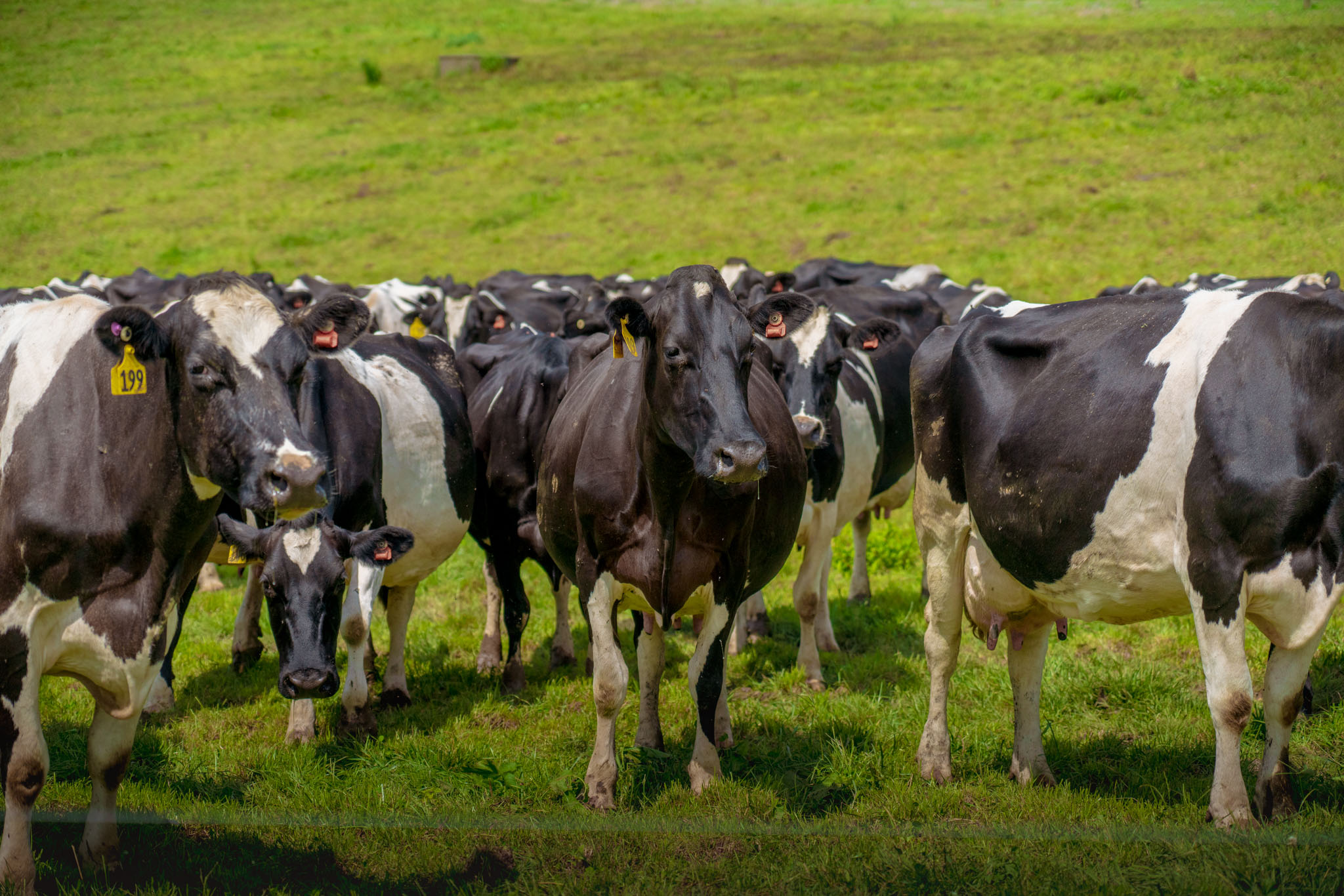
Over the four farms, 1700 Friesian and Frisian cross cows are milked, producing around 480-550kg of milksolids per cow.
Before that, he completed a Bachelor of Commerce in farm management at Lincoln University.
He says both his and Kylee’s parents really emphasised the importance of getting out and trying different things before coming back to farming.
“I love farming because everyone is different, there’s no one right way to get things done. There are always different ways of doing things, and every system is different. You can go to one farmer, and he will have one way of doing things and reasons for why he does it. But another farmer in New Zealand will have a totally different system.”
But for Craig, there really was no other option. He knew he wanted to be a farmer from a young age, and though he took his parent’s advice and worked in the corporate setting for a while, he was more than ready to get back to the farm when the partnership started. Even when he was working at ASB, he would always take a few weeks off to help with calving and would relief milk whenever he could.
Kylee had always been drawn to going overseas and studied tourism. After spending a little time overseas, she came back to New Zealand and worked on her parents’ farm. In 2008 she started working for LIC. She spent around five years in that role before moving up to field and sales and worked in that role for another five years before resigning to be on farm.
“My parents encouraged me to apply for the role at LIC, they both actually met at LIC back in the day. I was unsure of what I wanted to do and it was in an industry that I love, and my career developed from there,” Kylee says.
Her parents also farm nearby, so the Moras have found themselves surrounded by plenty of support from their team and families.
“I suppose what we’ve learned is that having farms in close proximity has been good. We’ve also found having family support close by has been positive for us,” Craig says.
This support has allowed them to work on expanding their farming operation. Craig’s parents owned their farm, and in 2013 the family started a partnership and expanded from the 220-cow dairy operation to purchase the neighbouring property. There’s a total of up to 16 staff at any time in the year including Kylee, Craig and his parents, hitting its high around calving.
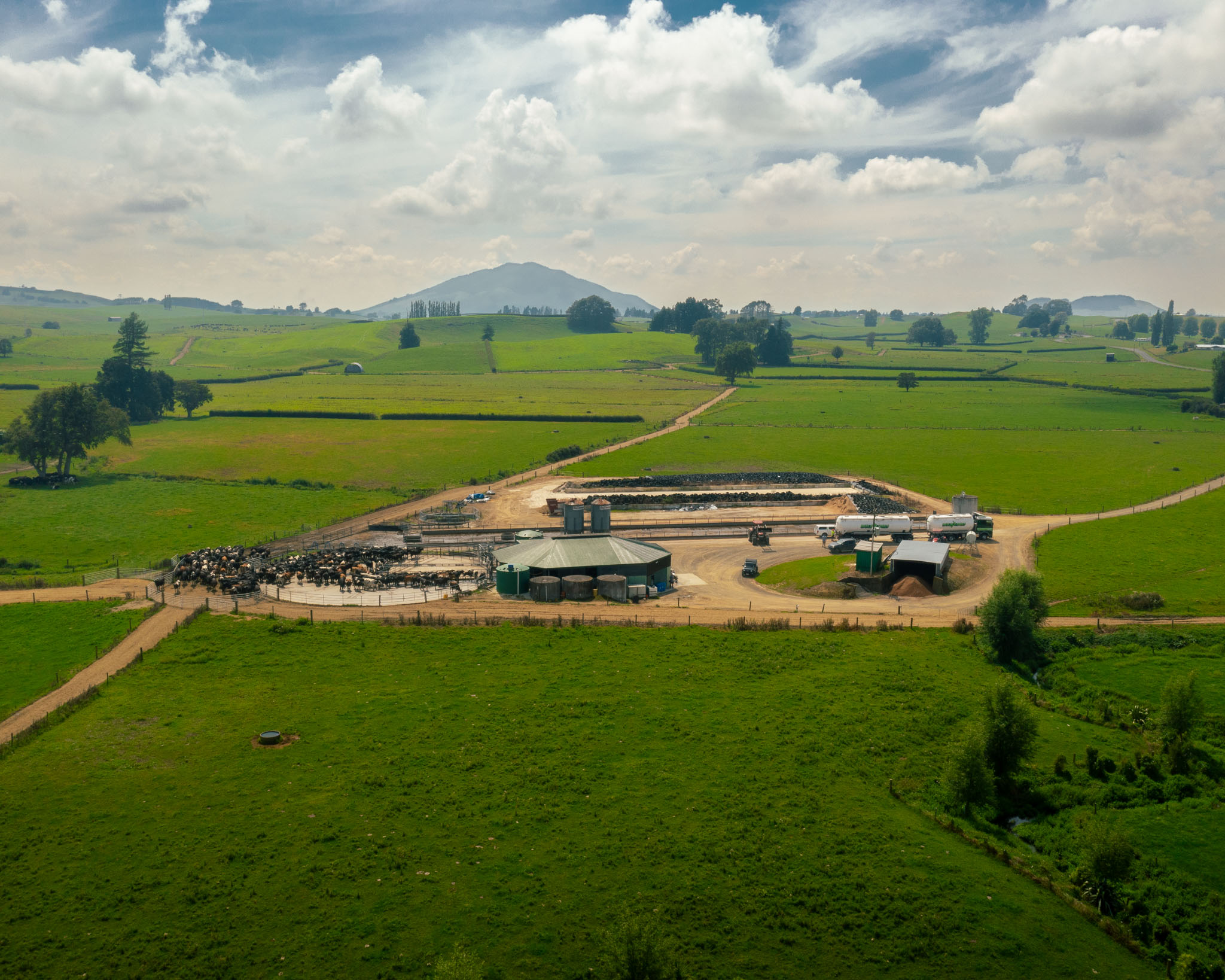
An aerial view of one of the milking sheds and herd coming at Mora farms at Ōtorohanga. Craig and Kylee Mora own three of the farms in partnership with his parents.
Steady growth allowed them to purchase what they call the bottom farm in 2018, and then in 2020 they took on a lease farm close by. This was quickly followed with the purchase of another 210-hectare dairy farm in 2022 which they converted into a dry stock farm.
“It’s all based off my parents originally” Craig says, “the original farm was next door. Whilst they leave a lot of the stuff to us, ultimately, they’re still very much a part of it.”
Three of the farms are in the partnership, with 1450 cows in one entity and 250 still owned by Craig’s parents, but they choose to run them together holistically.
Some team members have been around since the partnership was started.
“Deep worked for the previous owner, so he’s been with us since 2013, and he now has a family and is making his own way. Deep contract milks my parents, Burr and Waipa. So, he milks 1200 cows across three farms. Ben and his family joined us when we bought the bottom farm, so he’s been here since 2018 and he contract milks that with his team there. We’re real lucky to have those two guys as part of the team,” Craig says.
As the farms are run somewhat independently, they each have different equipment. Two of the farms are 42 and 44 bail internal rotaries, and two are 20 and 36 bail herringbones. While they all have feed pads, only two currently have in-shed feeders. Every cow is fitted with a CowManager ear sensor, and as of this year, all of the sheds now have Protrack drafting gates.
Any changes in equipment or technology have been made to help with risk mitigation. “The biggest risk for us is having a key person. We’ve got great people on the ground but relying on that key person for 10 weeks during mating was a real risk. And with the ever-changing environment, we potentially won’t be keeping these great people forever. So, we put a lot of thought into how we can minimise risk of change,” Craig says.
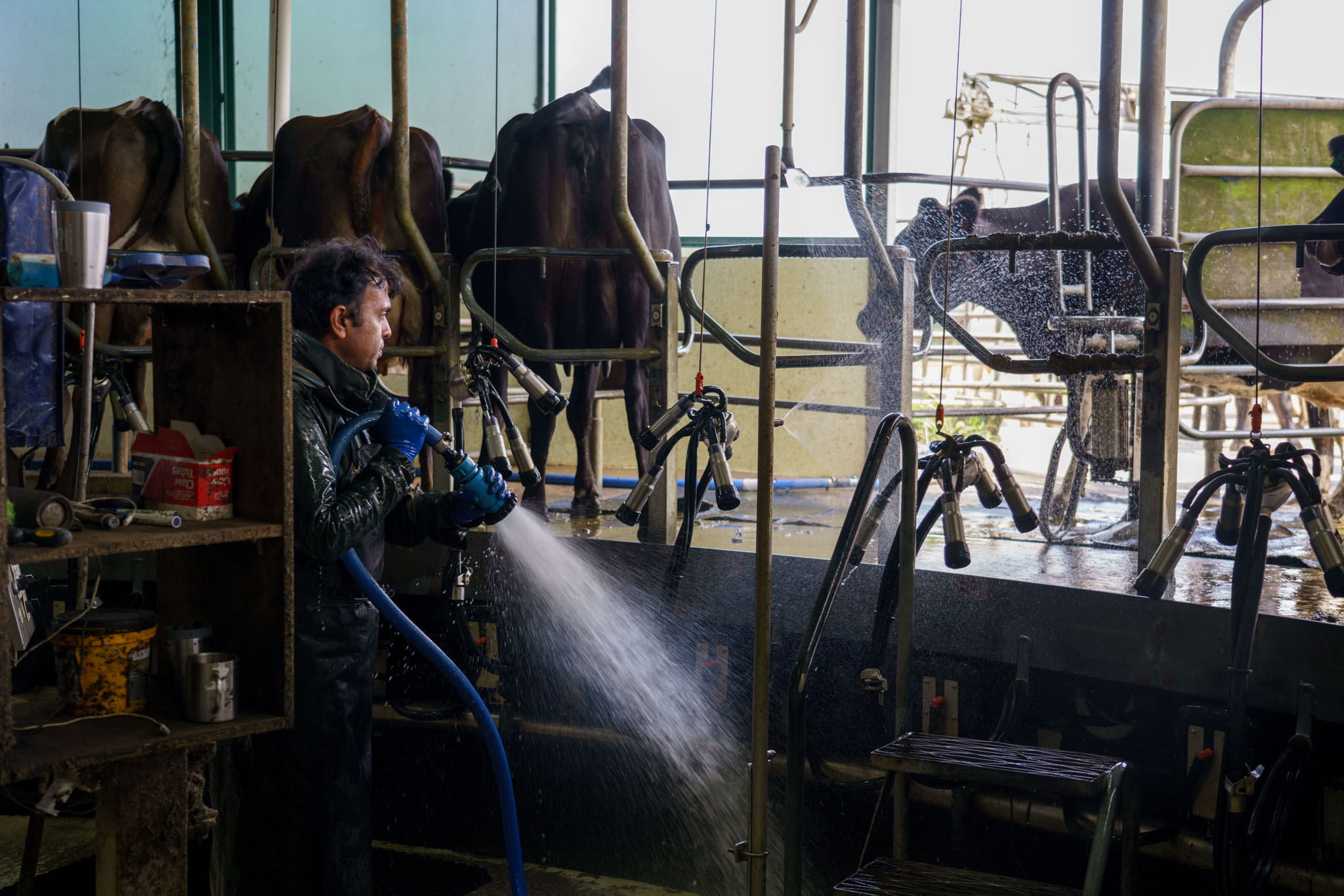
Team member Danuka Jayatilaka hoses down the platform between cows.
Each of the farms have different topography, so this is something the Moras consider within their mating goals. They’re currently aiming for a smaller cow for two of the farms, as one requires the cows to walk long distances and the other is flatter and wetter.
Apart from that, Craig says his goal is to breed the type of cows you don’t notice. Some of the herds are mated with Kiwi Cross, and Craig jokes that it doesn’t take long to see some colour coming through over the years of mating them to Friesian.
He jokes that mating is like the Da Vinci Code, so they’ve tried to make processes as simple as possible for everyone in the team. Mating begins in October, and they start mating for all farms within the first week of the month.
“We only do spring calving and heifers start around July, so we send milk roughly in the first week of July, give or take.” AI is around 10 weeks across the farms, and they calve in about eight and a half weeks, and AI all their heifers.
“About four and a half weeks is getting replacements, and then we move on to short gestation after that, so everything is calving about 10 days earlier than it normally was,”
Kylee explains. Each year, they aim to get replacement numbers of around 25% for each herd, and do well to hit that goal.
They have similar six week in-calf rates across the four farms, ranging from 70 to 80%, and hope to continue improving those numbers each year. The average empty rate is 12% this season, which is something they’re proud of in what has been a challenging year.
Kylee rears the calves on one farm but oversees all the farms during calving. They’ve started looking into how they can adapt and change their processes to give their cows everything they need from day one.
“We’re just sort of reviewing potential around improving our calf rearing and looking at that slightly differently as well. You know, are we feeding the calves to their potential, or are we feeding them to a system? And I would question that we, like most New Zealand farmers are feeding to a system, rather than looking at ways to maximise growth,” Craig says.
This year, they’ve started fortifying the milk with milk powder, so they’re getting the same number of litres but there’s an increase when it comes to the nutrients they’re getting. They’re switching their thinking from what they call a milk litres-based system to a milk solids-based system, in the hopes that the extra care in accuracy will allow them to ensure their calves are well fed.
“If, for example, we feed them four litres, why do we feed them four litres? It’s just what we’ve always done. And if you ask someone else, everyone in New Zealand will have a different feeding system, but why?”
One thing Craig learned from his parents was the value of measurements and accuracy, and that is something he has carried through into the running of the farms when it comes to making sure his cows are fed well.
“From a management point of view, we enjoy having fed cows. I don’t enjoy having the stress of not feeding my cows very well,” he says.
“We don’t do random very well. I don’t like random,” he continues.
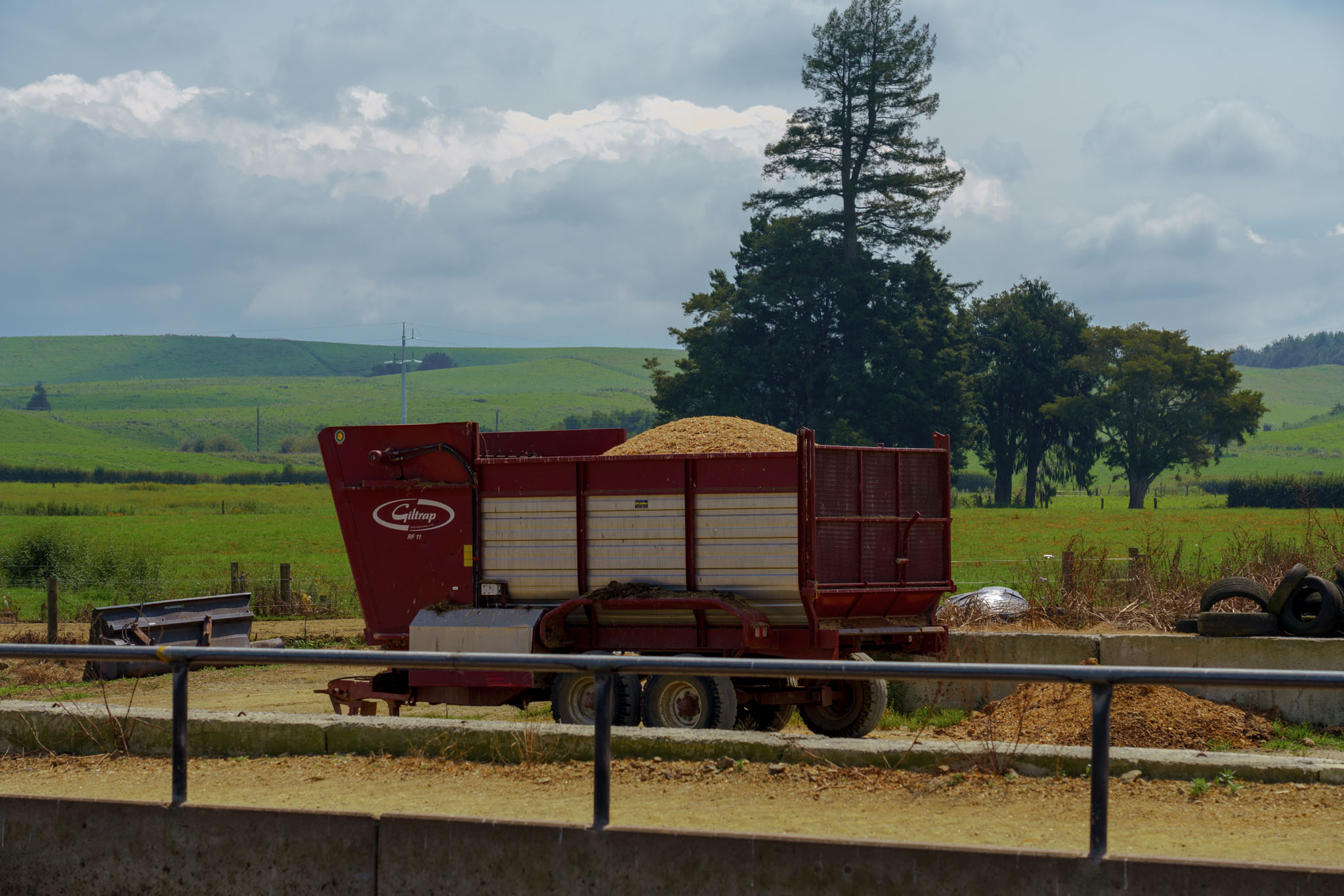
Nutrition is kept fairly simple on the medium-input farms and Craig does all the blends himself for the sheds, using maize, palm kernel and grass silage on farm.
The wagons have scales, and everything is measured. Everyone in the team knows the measurements and how much they’re feeding each day. To the Moras, consistency and simplicity are key.
“Our nutrition is very simple, in the past I’ve just done all the blends myself for the sheds, and we use maize, palm kernel, and grass silage on farm. We do have a farm consultant who will visit every four to six weeks. Darren Sutton from FarmWise has been with us the whole time, and it’s an opportunity for everyone to check in and make sure we’re on track.”
Having the accountability of an external team member has helped them stay on track with their goals, and both Craig and Kylee like that it gives an opportunity for everyone in the team to bring forward their opinions and challenge new ideas. “You’ve got really good discipline to go out and condition score your cows every month. It sets those disciplines for us and helps us to try and make things right.”
The farms are run as medium input with a stocking rate of 3.5 cows per hectare, and that’s just the way Craig likes it. He believes it’s easier to manage the farms this way, as you’re always filling a deficit. He says it’s easier for his team too, as back calculating a deficit can be a lot simpler than managing grass alone. “We look to hit residuals and fill feed gaps if necessary,” Craig says.
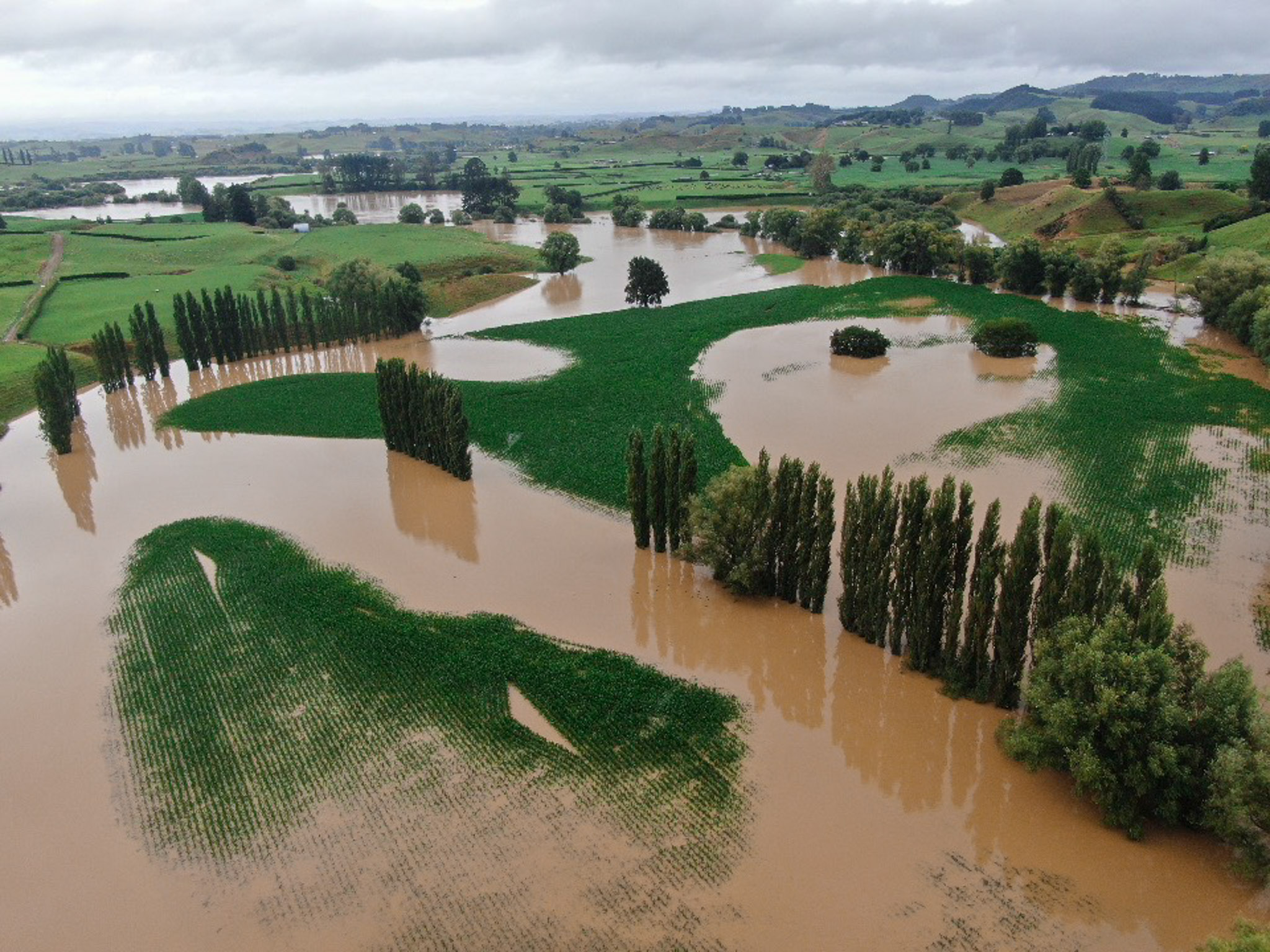
This season the Moras have replanted their maize twice, losing it both times to flooding. In December it was resown and the most recent weather events caused 52ha of maize to be either flooded or lodged.
However, the weather over the last year has presented some challenges. Particularly with the maize grown on farm. This means they’ve had to contend with the weather changes and adapt to ensure their cows remain well fed. “This season we’ve replanted our maize twice, losing it both times to flooding. In December we replanted again thinking we’d be okay because it’s summer.” The most recent weather events caused 52 hectares of maize to be either flooded or lodged.
Any nutrients and fertilisers that are put into the soil on the farms is based off the recommendations from Balance.
Craig says they try to run “pretty high nutrient levels”, but ultimately go off recommendations from experts within their network. They place high value on working with and trusting the opinions of industry experts.
Effluent is spread by traveling irrigator, and they try to use recycled green water wherever they can.
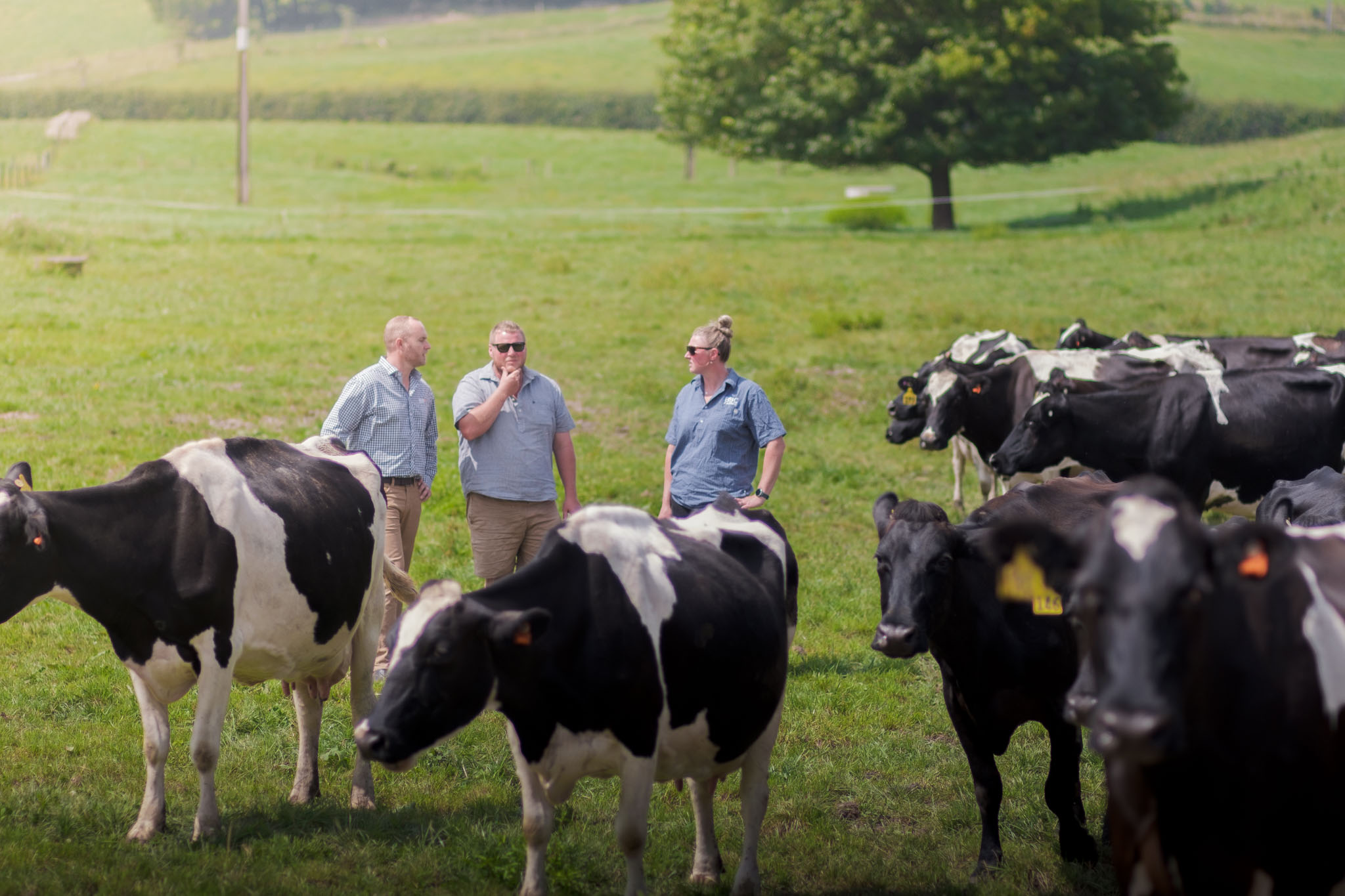
Craig and Kylee Mora use the CowManager monitoring system to help them make informed decisions on farm. Craig, Jared Bekhuis, national manager of Senztag Automation, and Kylee get out among the herd.
The Moras know that ensuring their cows and calves are well nourished and taken care of goes hand-in-hand with reproduction and are hoping to use the data collected by the CowManager monitoring system to help them make informed decisions on farm.
They are constantly looking at what changes can be made on farm to cause overall improvements.
“Our main goal is reproduction, which feeds back into nutrition. But we like to always consider what we can do within our budget. Are there little things we can do to make changes to produce better or hold condition, or what are we missing?”
One thing they’ve decided to do to help inform these sorts of decisions is enlist the help of Dr Krispin Kannan from Veterinary Enterprises. Dr Kannan is a veterinarian whose business role focuses on technology solutions on farm and has spent the past 14 years as a dairy vet.
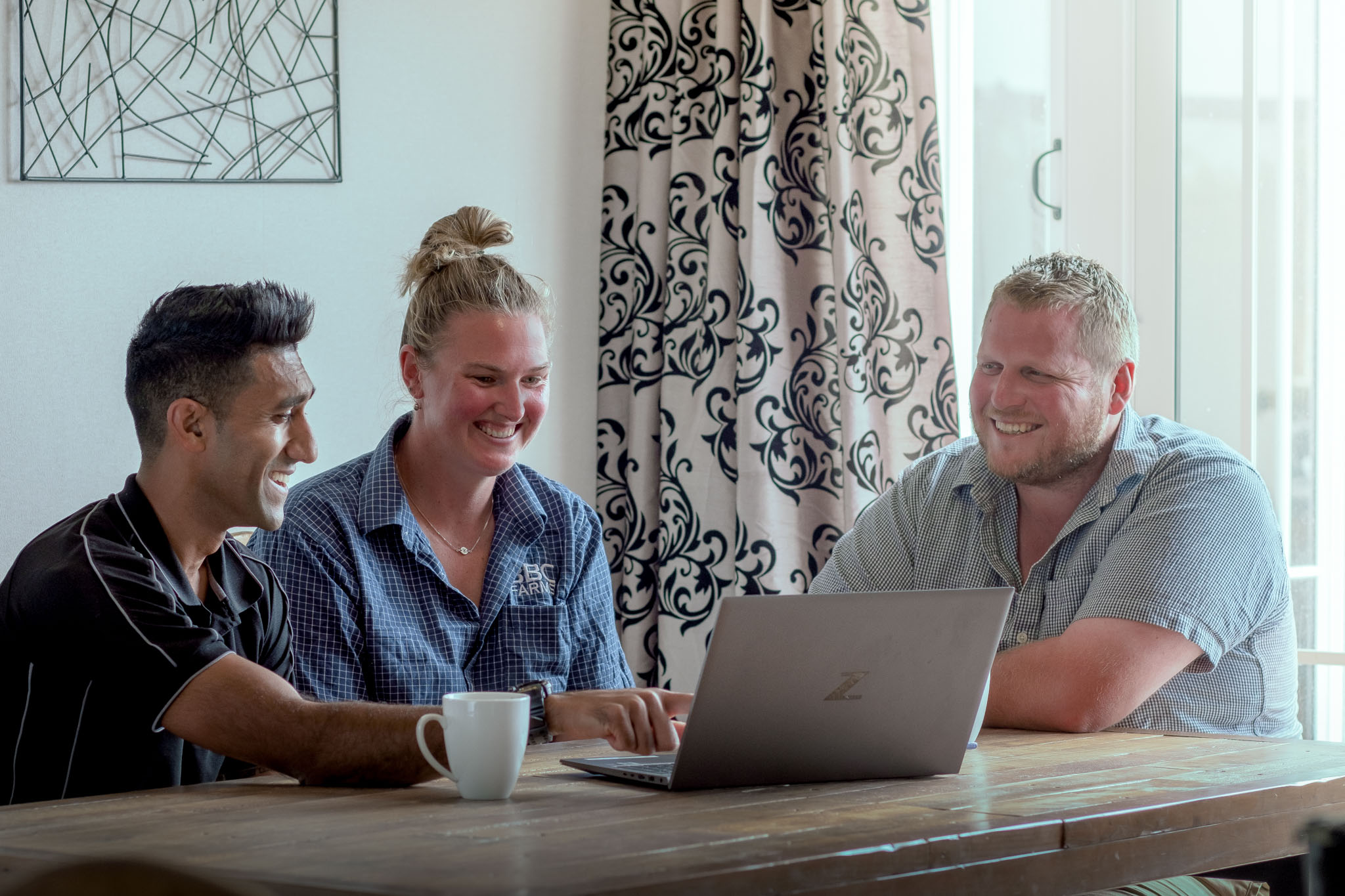
More recently he has been familiarising himself with new wearable technology and helping farmers turn data collected from their monitoring systems into meaningful, practical action. He says “it’s about adding more value via insights and interpretation of the data this is already collected for the farmer by their systems”
The Moras didn’t originally seek out the system for the purpose of monitoring nutrition but have found the insights invaluable. “The thing we are trying to find out by working with Krispin is, are we fully feeding them? We can think we are, but looking through the CowManager data, what are we feeding them, and what improvements can we make?”
Craig hopes that adding someone like Dr Kannan to the team who is experienced in turning data into action will help them make changes that will have a direct effect on their farming system. “You’d think after 10 years of farming you could just flip back and look at each month to work things out, but it is quite different,” he comments.
With Dr Kannan on board, they’re hoping to get back to the data. Soon they will have over two years of nutrition data on the herds and will be able to understand better what is happening during crucial times of the season.
Even though they’ve brought in experts to help sort through the data, they know any changes they make are going to be simple ones. “Any changes and purchases still have to fit within a simple system and use the resources available to us to manipulate it to see if we can improve outcomes,” Craig says.
The Moras aim to continue to make small changes while keeping things as simple as possible so they can retain the team they value highly. “We just bumble along,” Craig laughs. “There are probably too many things we’re focused on to be fair, we try get a lot of stuff right and we try to do things right. I suppose like everyone, we’re just trying to improve everything all the time.”
Craig and Kylee are aware that their animal health cost per cow is higher than most, but they know that those costs are proactive, and they prefer that over reactive farming. Using technology and simple processes to their advantage, they’ve been able to stay ahead of challenges brought forward from quick growth while remaining true to valuing the people who have helped them over the past 10 years.
“Our goal is to keep retaining people, obviously we’re going to go through some changes but we’re just trying to do all the little things right so we can hopefully get the benefits at the other end. We’re always running to try and keep up with what’s going on.”
